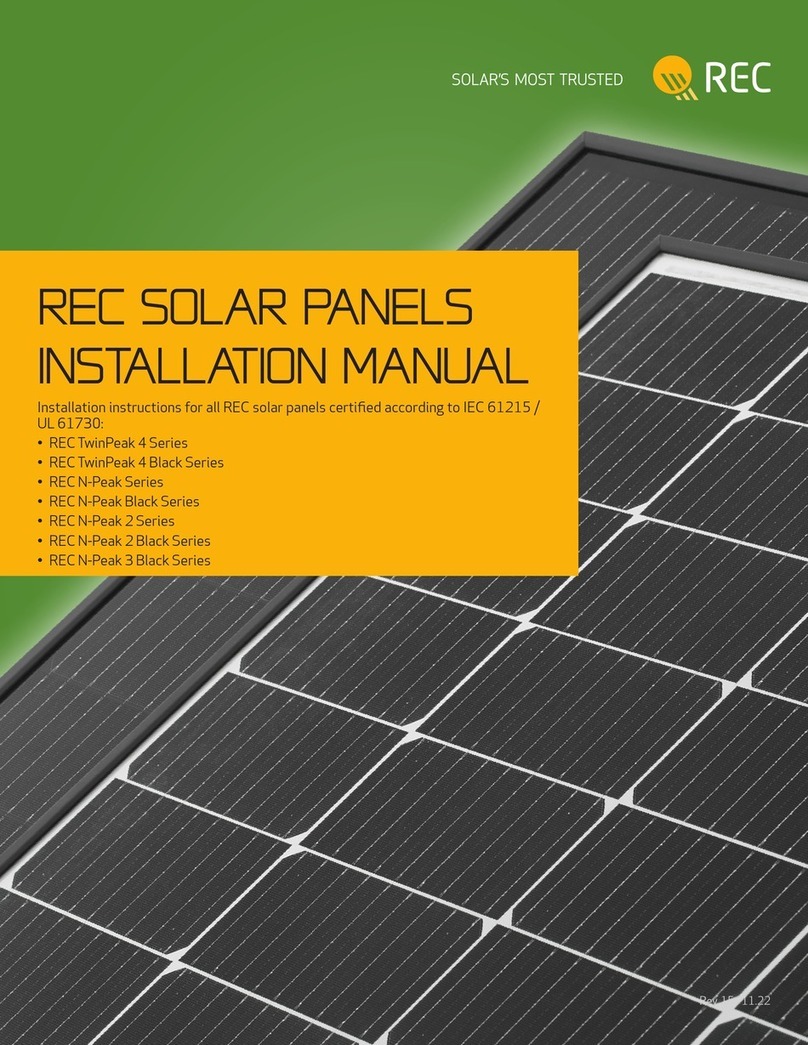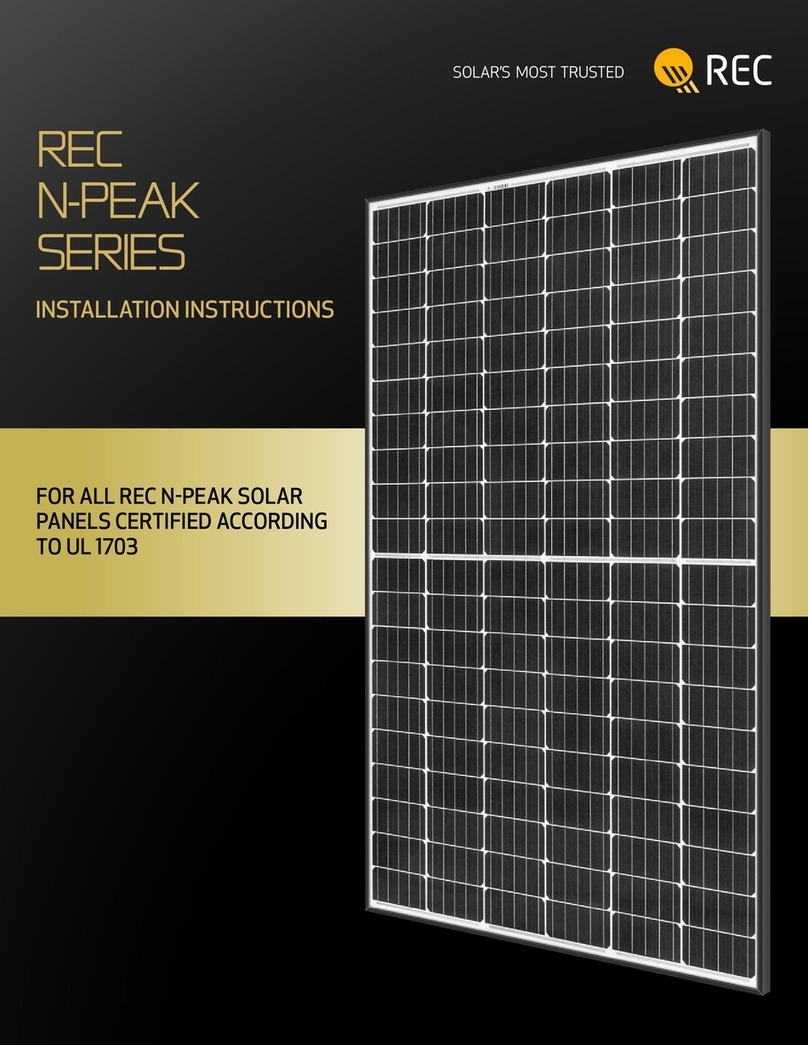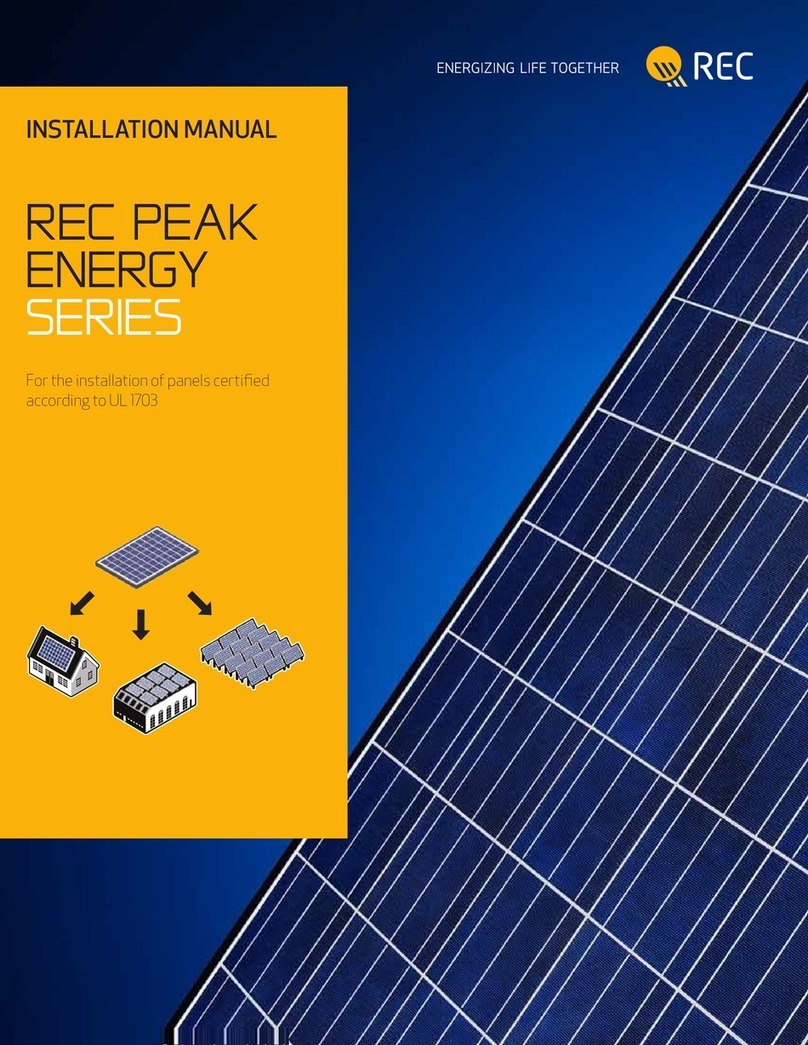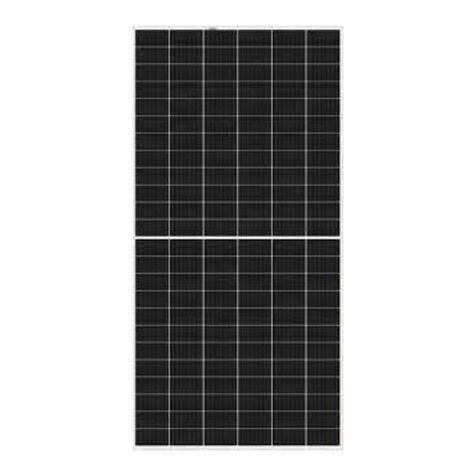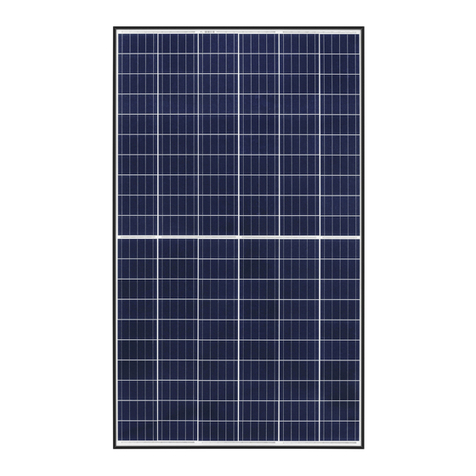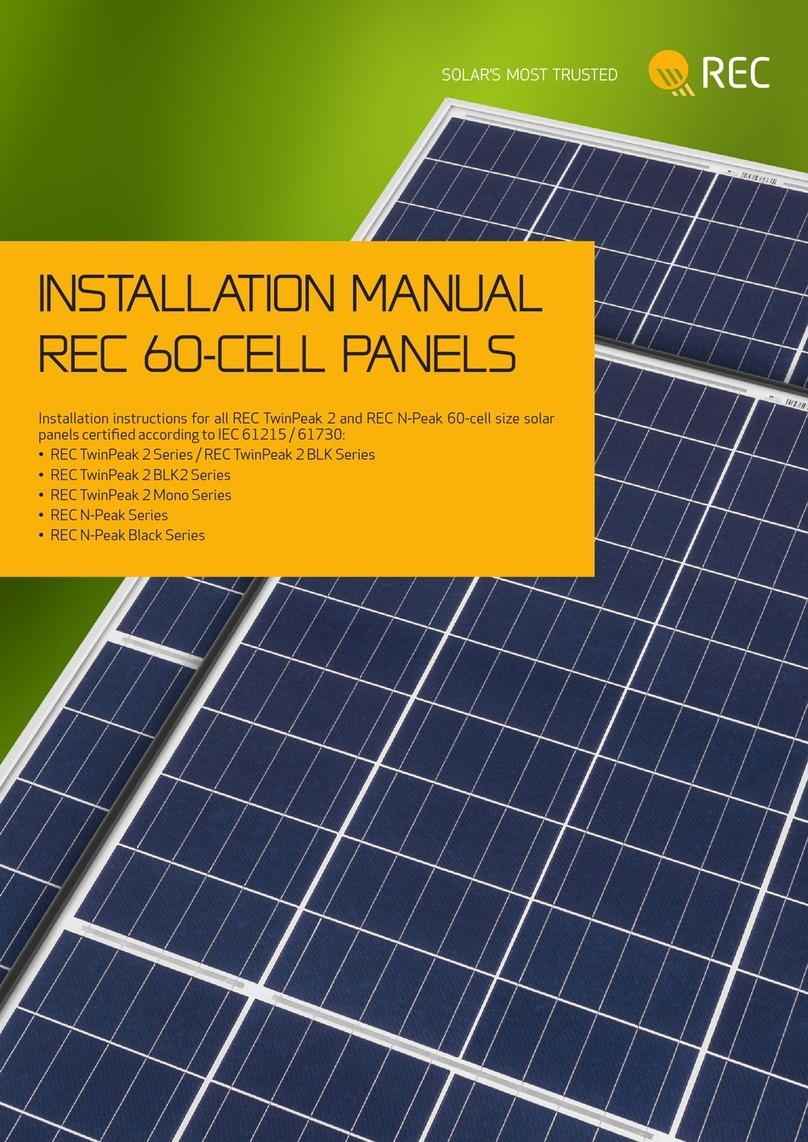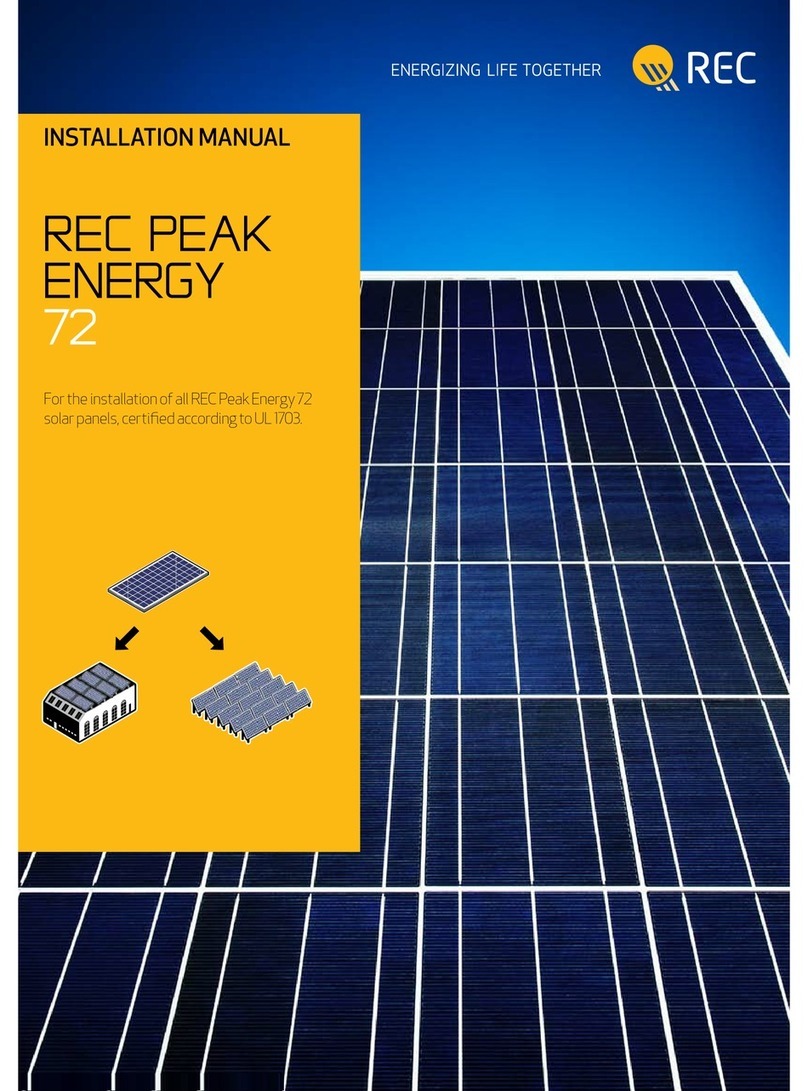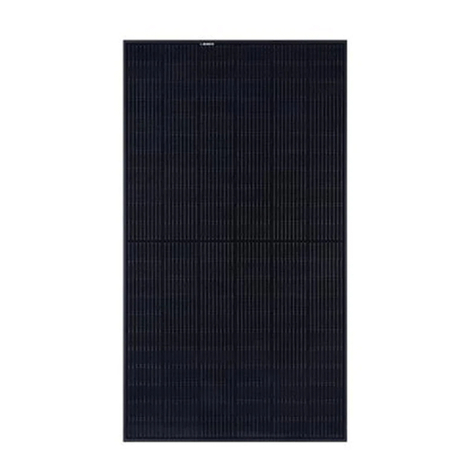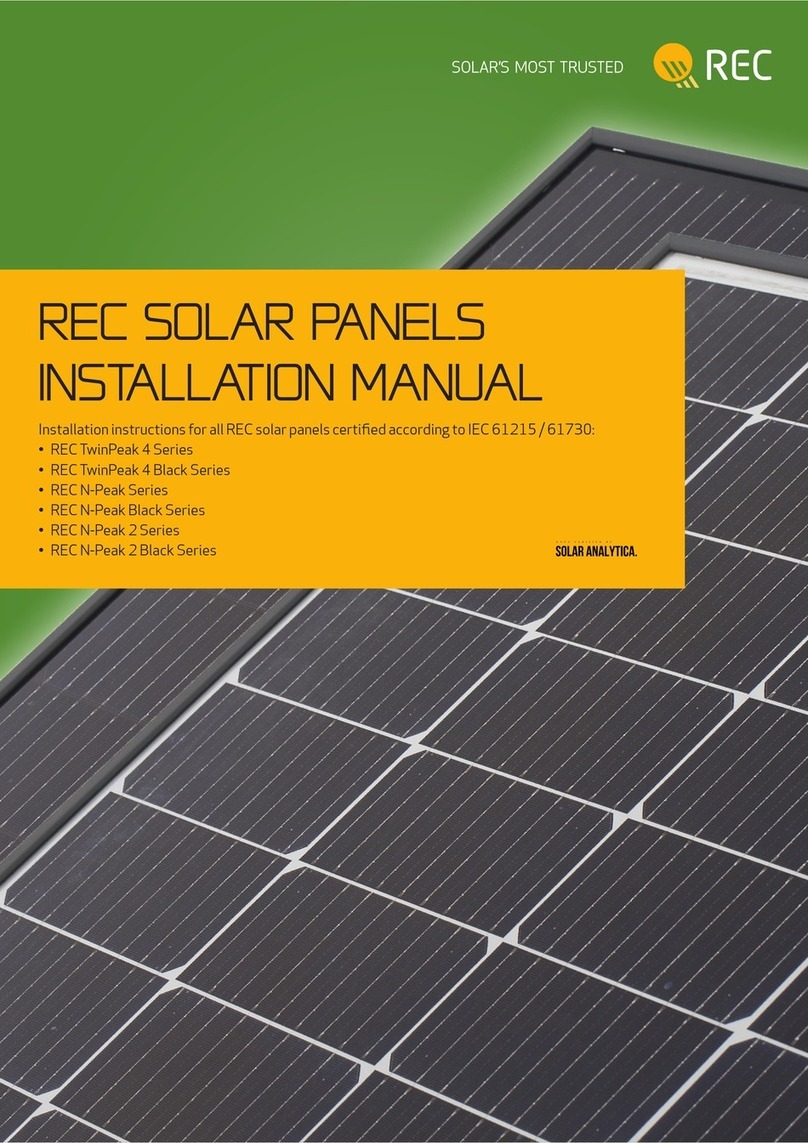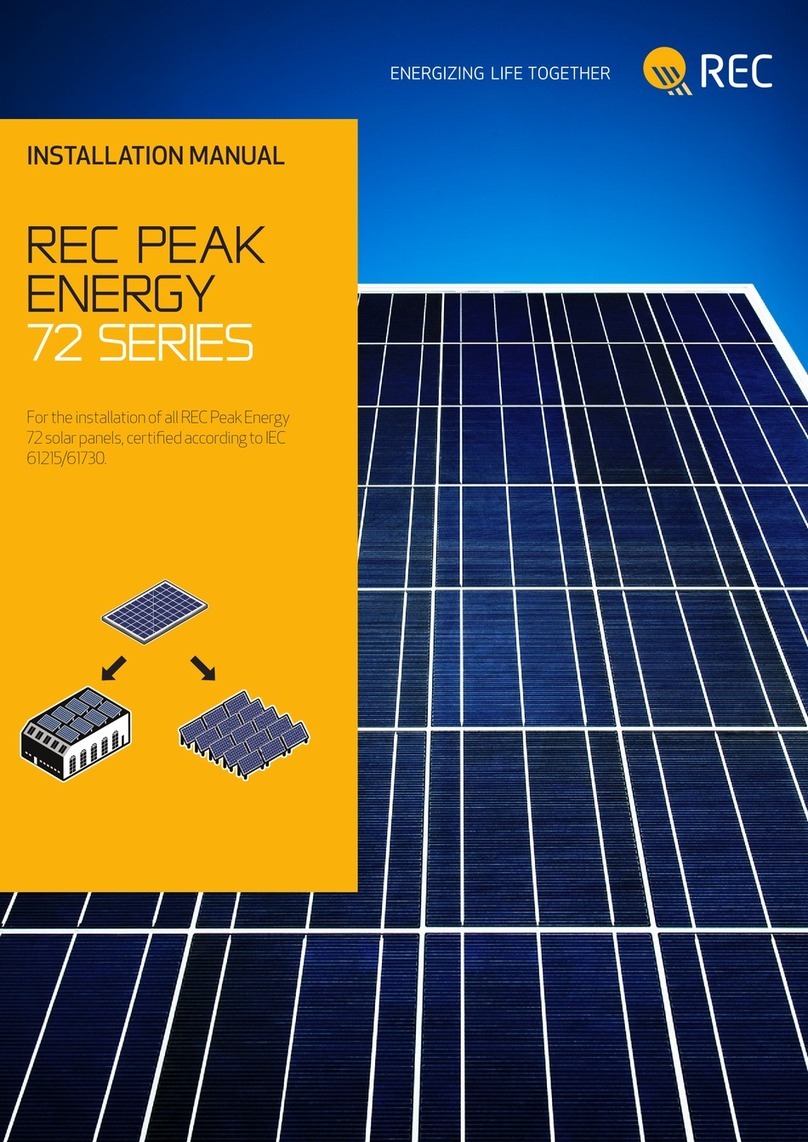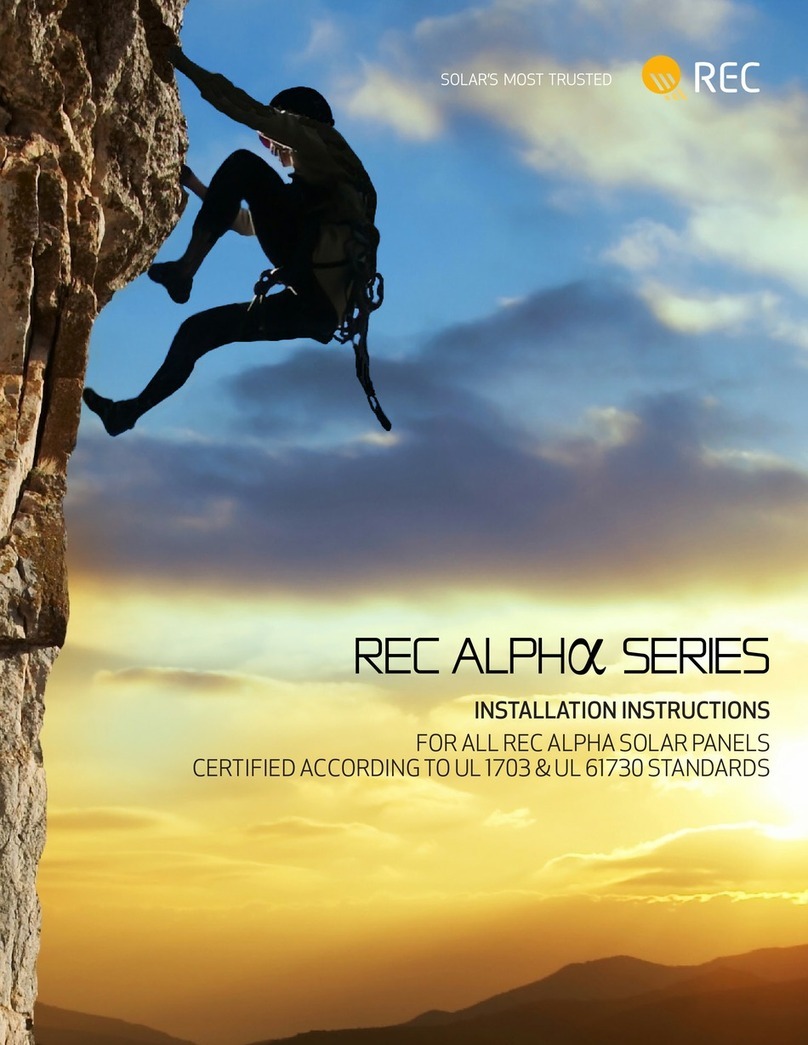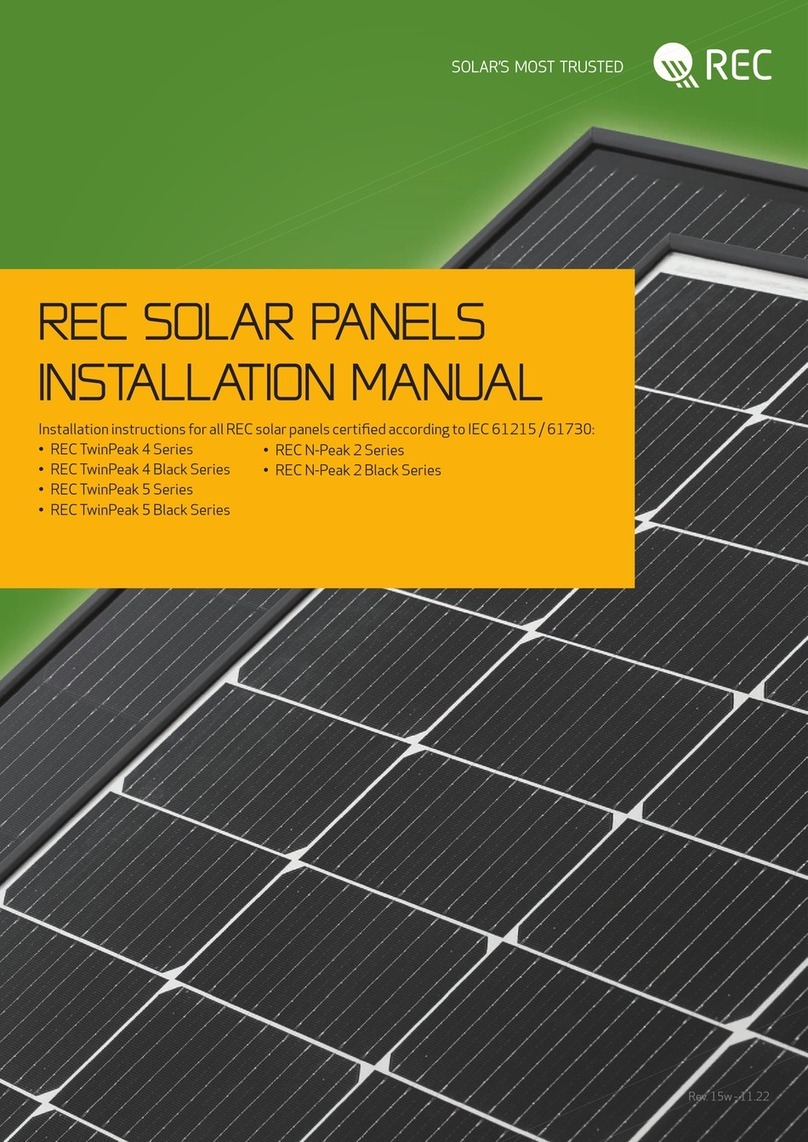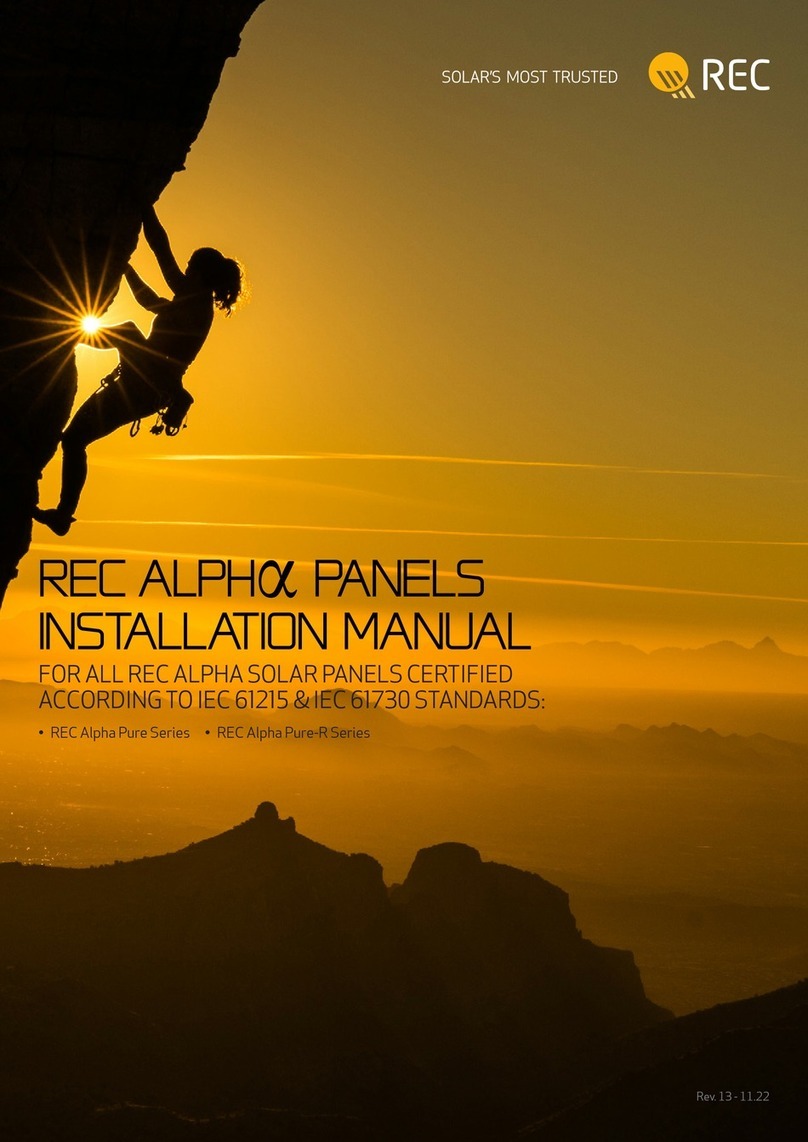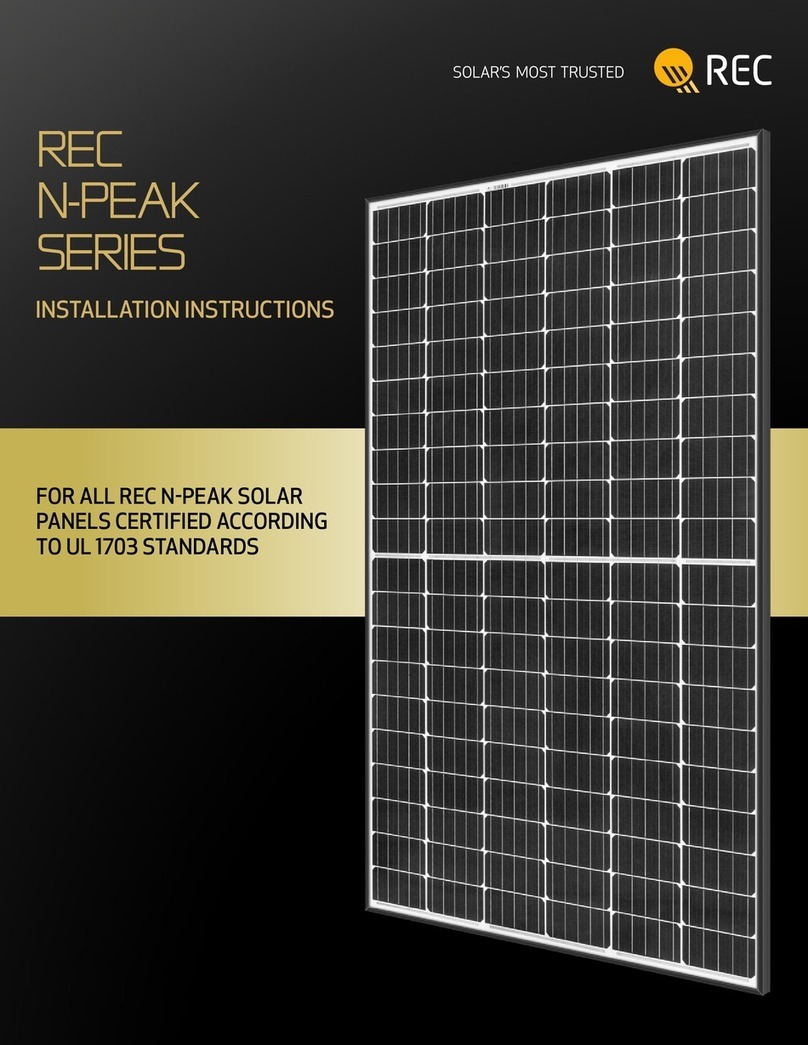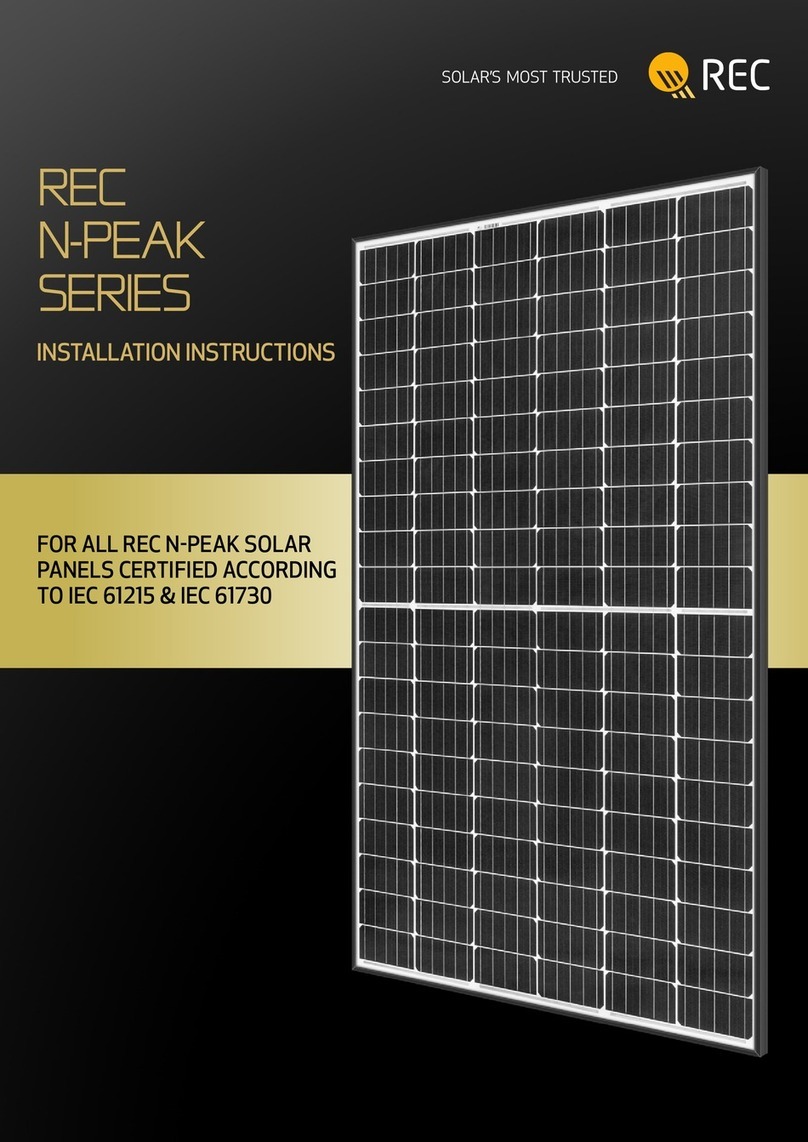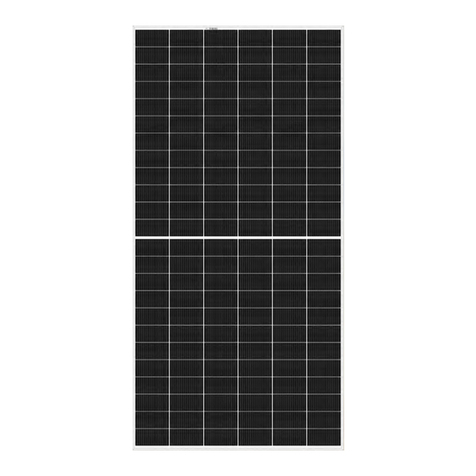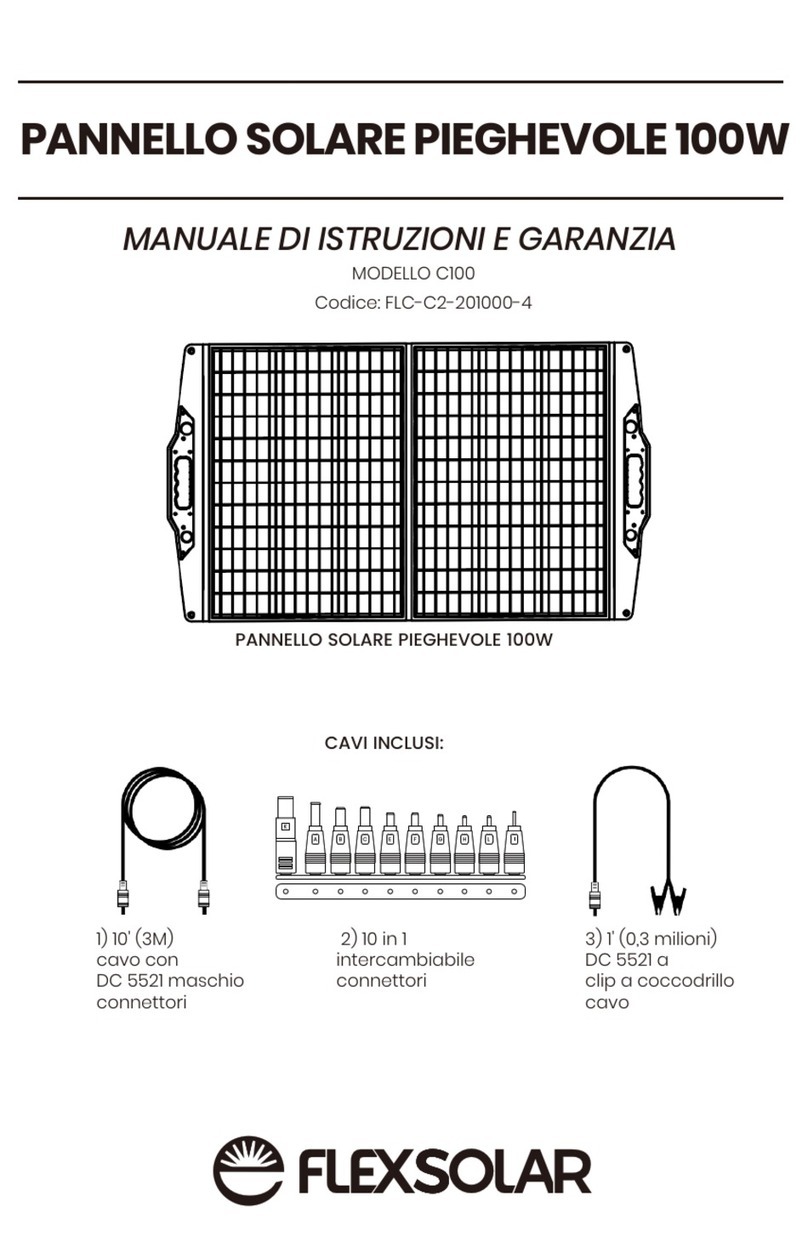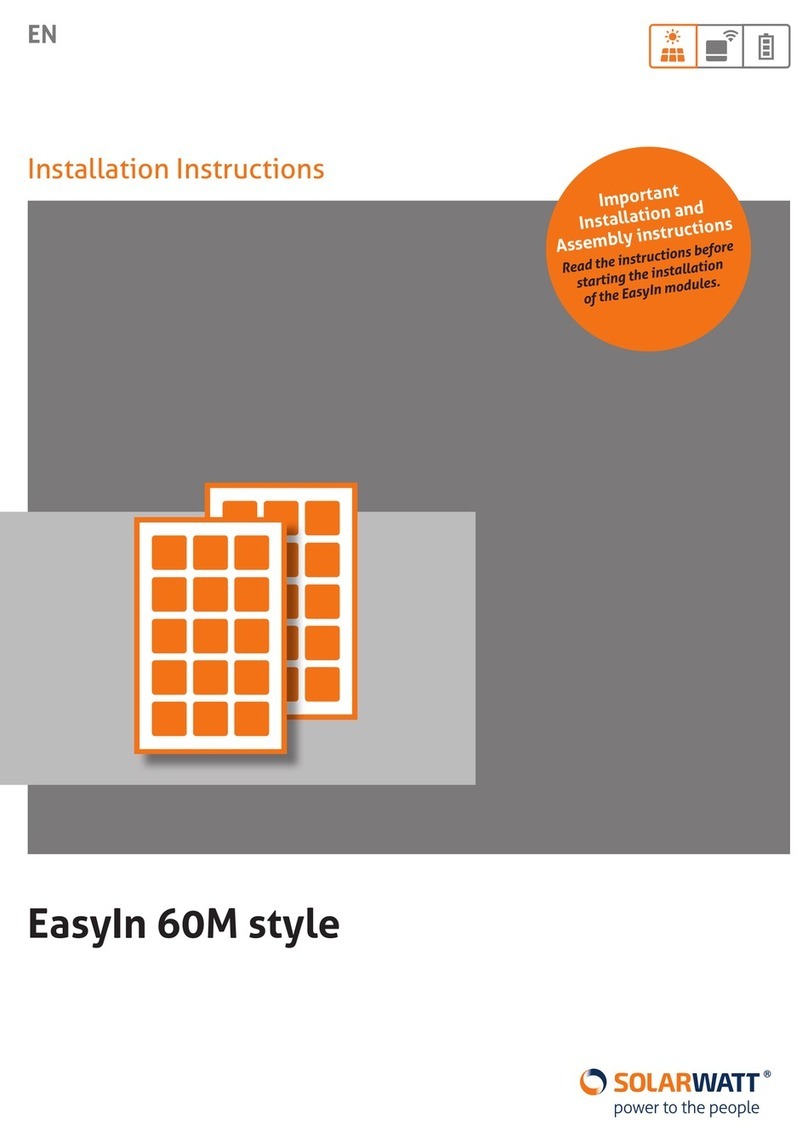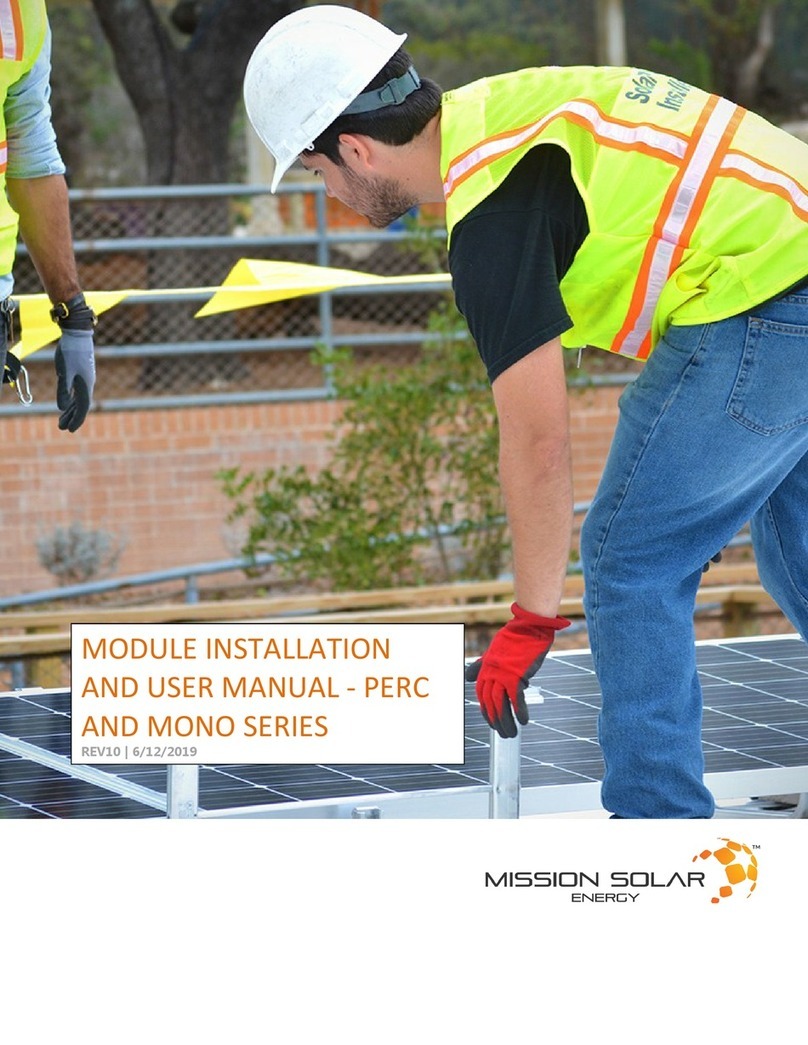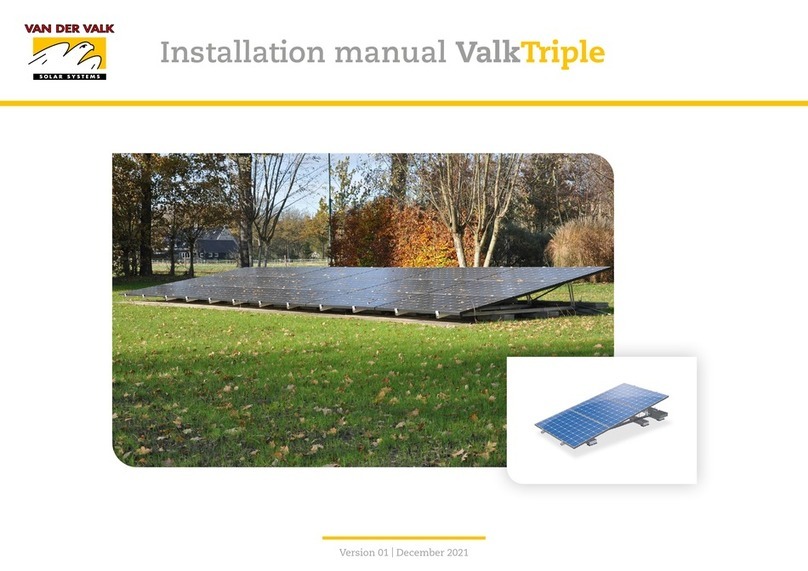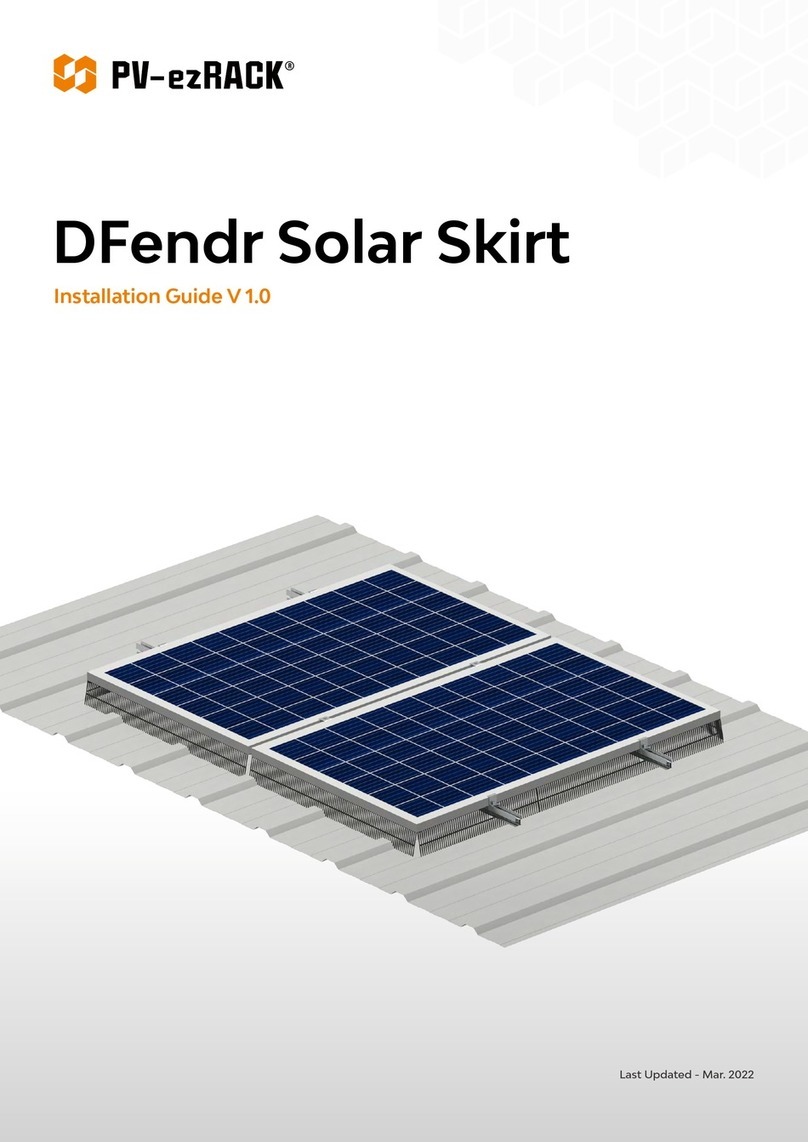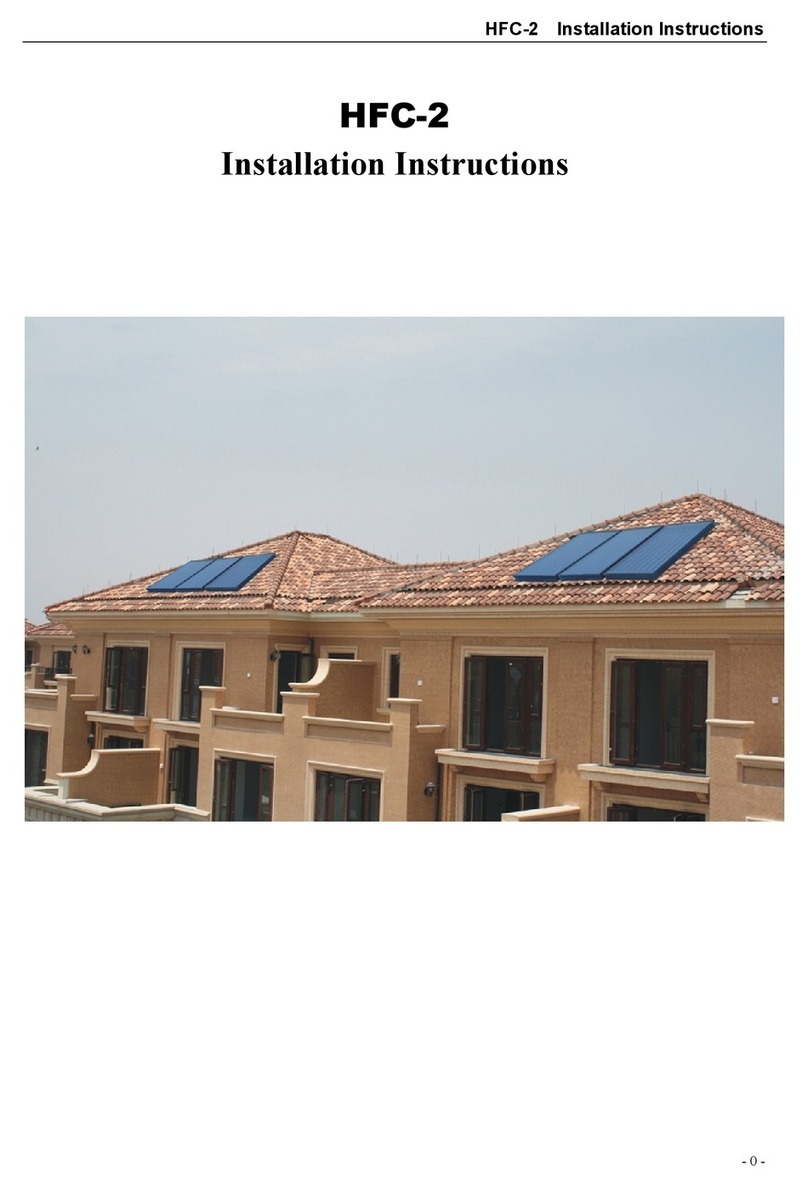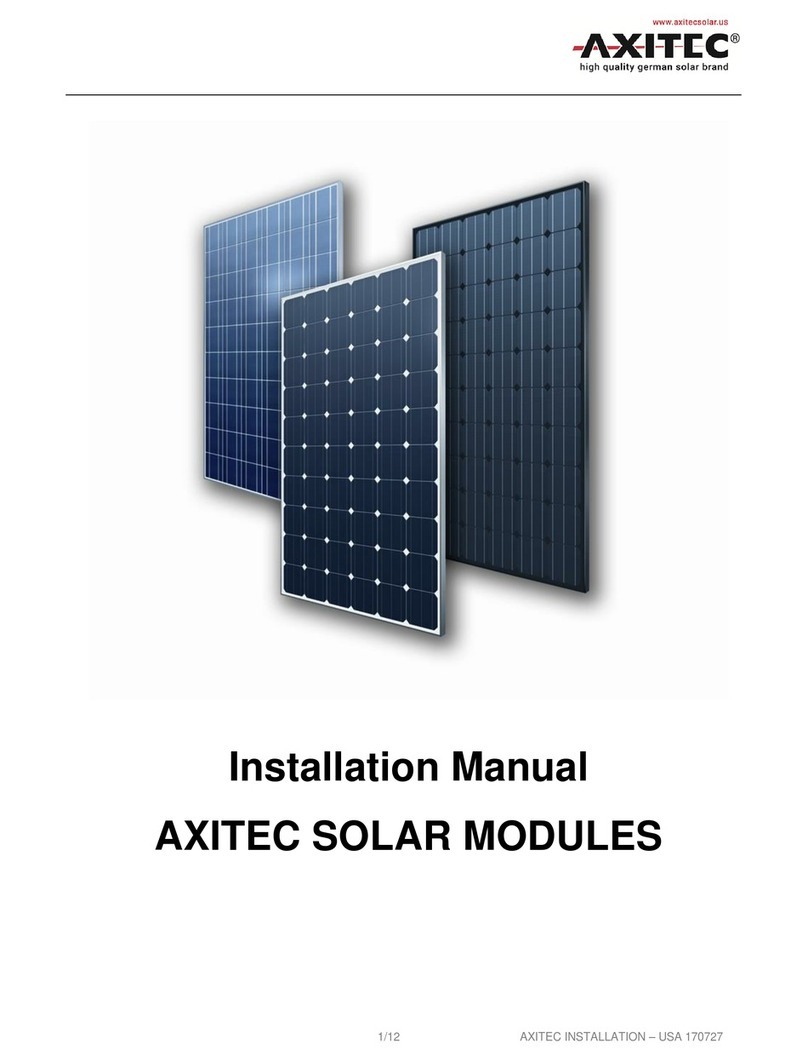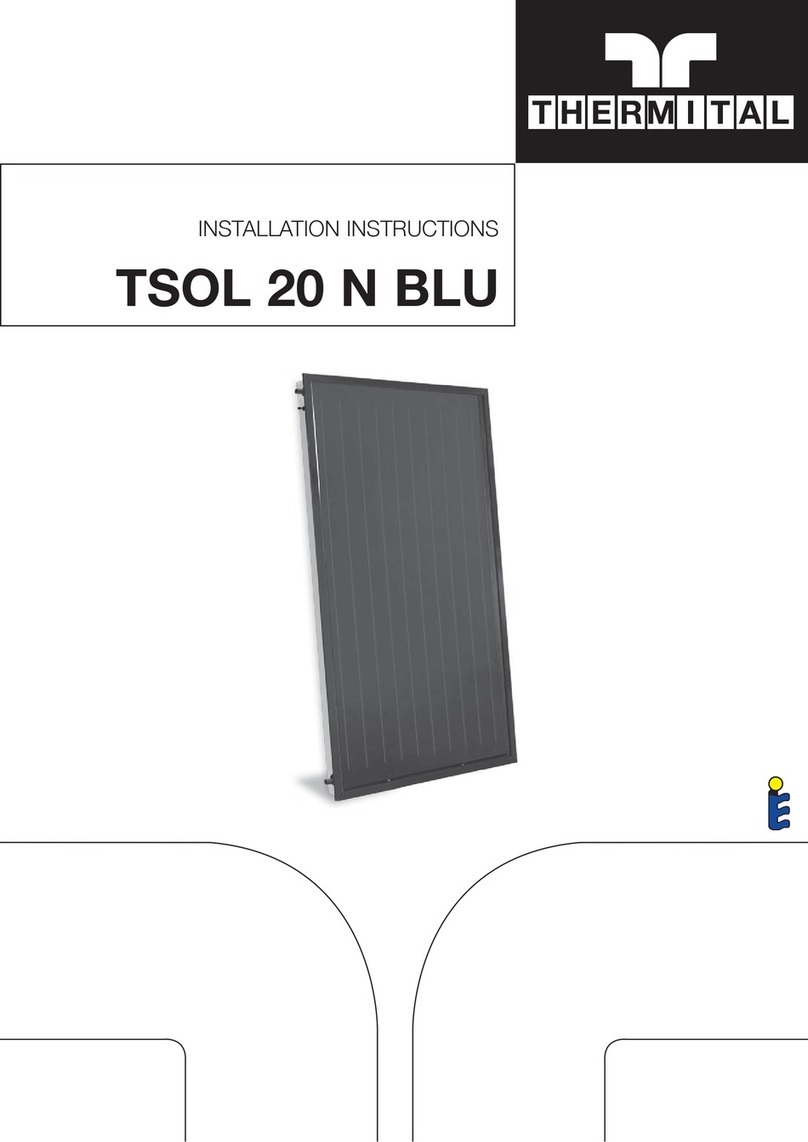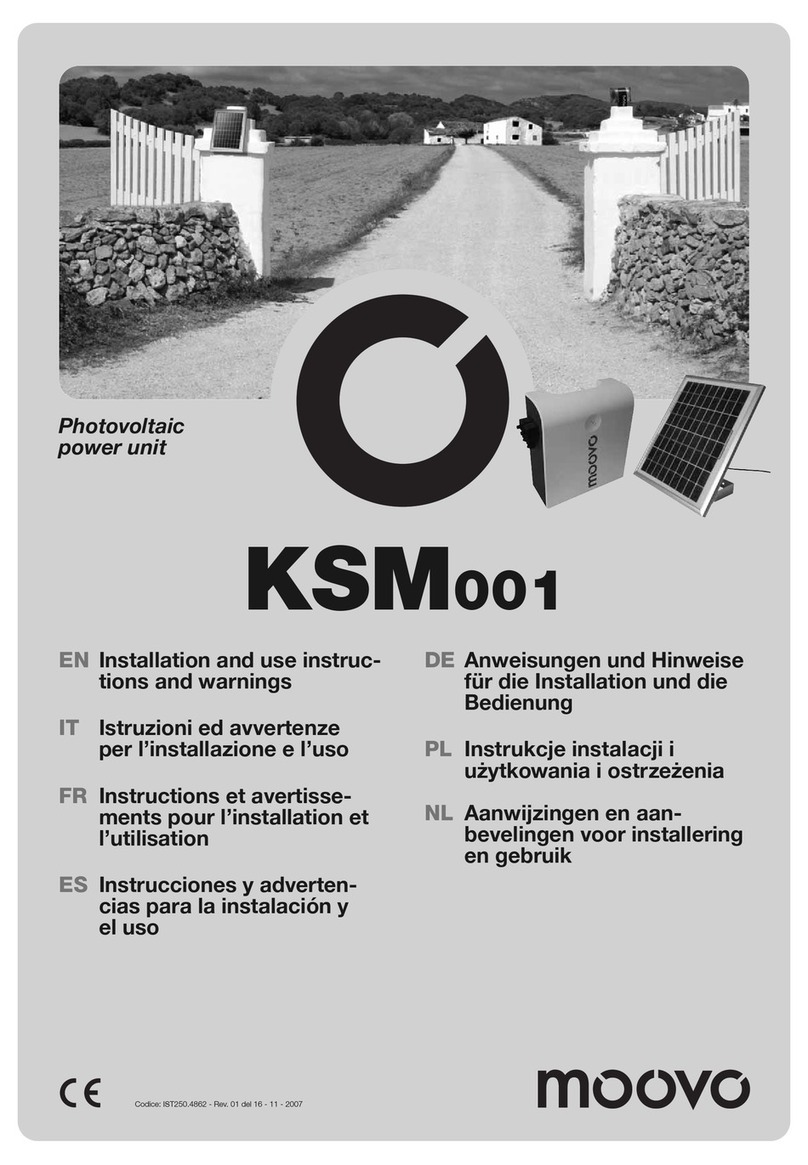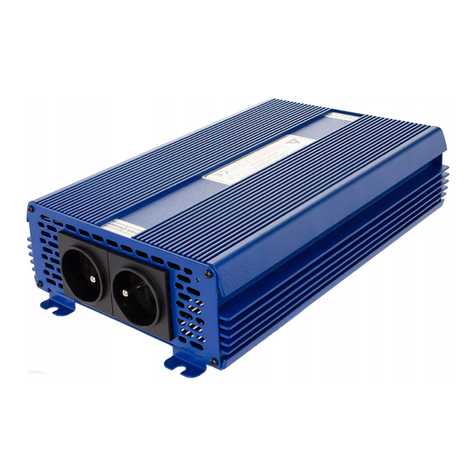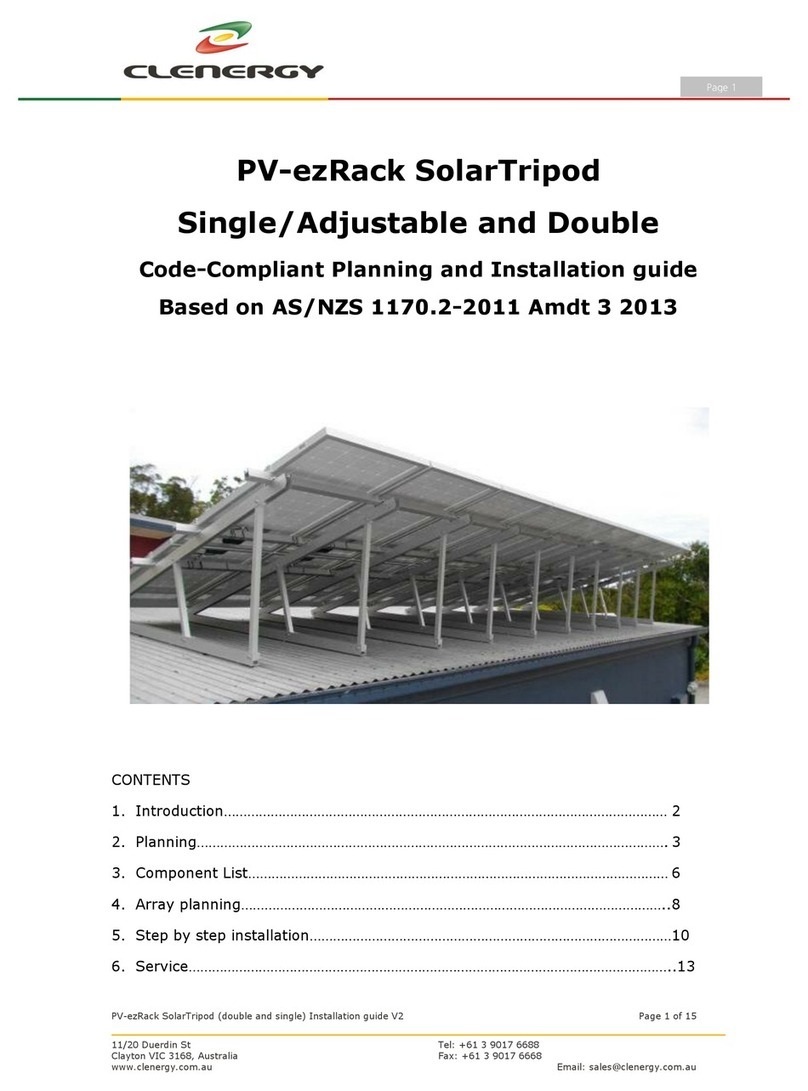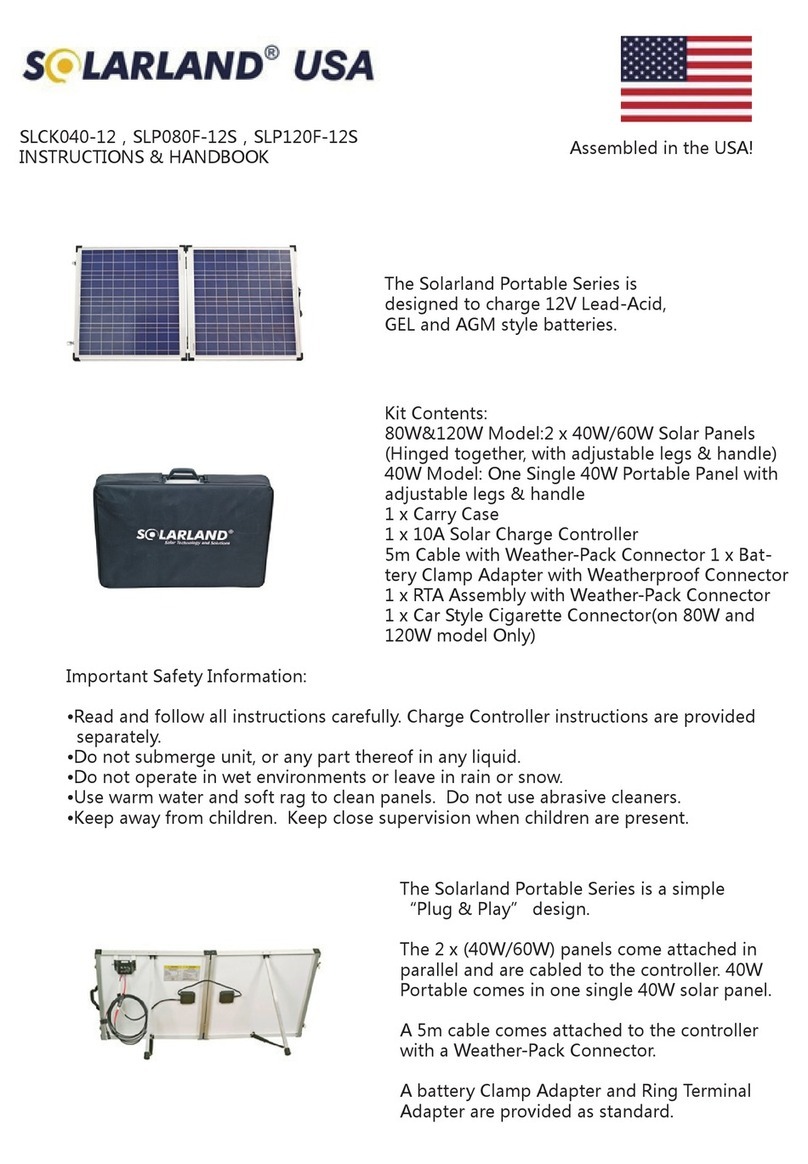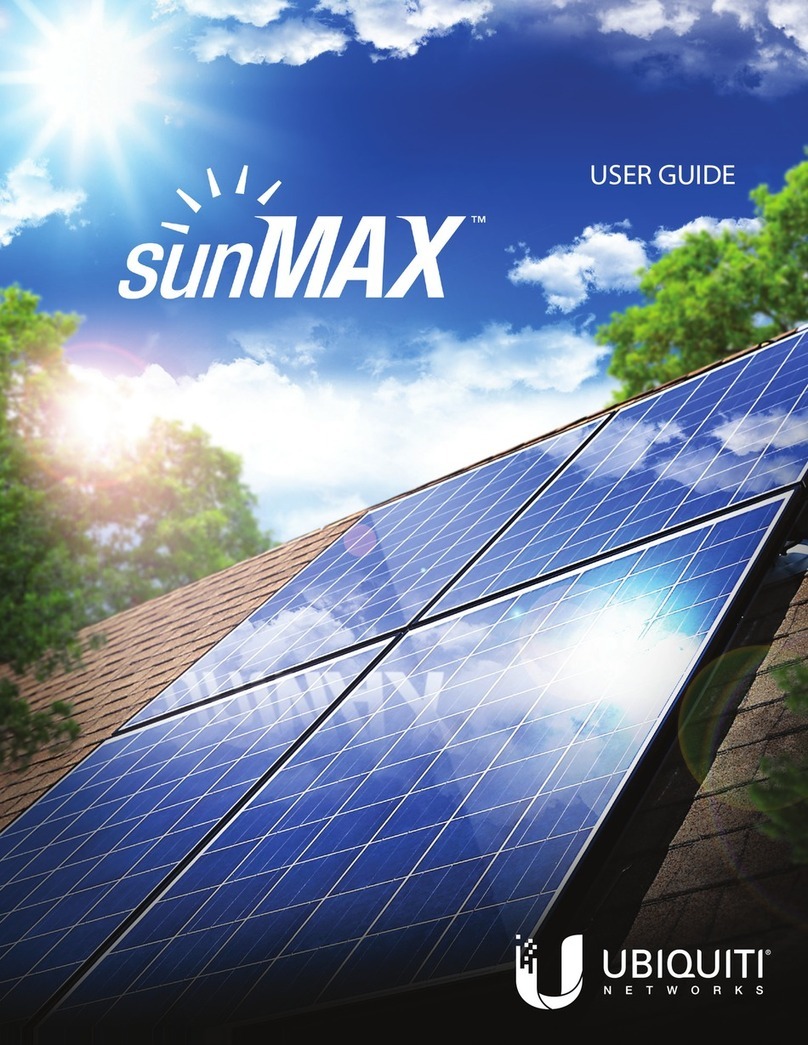
Fig. 3: A clean and functioning solar installation
Note: This guide is intended to help ensure a safe handling between solar panels and between other balance of system components. REC accepts no responsibility for
any damage caused by improper or incorrect use maintenance or cleaning of the panels. The Warranty on the product is only valid if the instructions in the appropriate
Installation Manual are observed at all times.
CLEANING THE PANELS
Washing the panels
A standard flexible garden hose with domestic water pressure
may be used to apply as much water to the panel or array as
necessary, allowing the water to run down the entire surface.
Although REC panels are manufactured to international
standards and have passed all relevant certification tests, the
useofhighpressurehosesforcleaningis not permiedasthese
may exert pressure in excess of the certified load and cause
impact damage, damage to the frame bonding, the laminate or
cells and force water between the glass and frame.
The use of pressure or steam cleaners and high pressure
hoses, knives, blades and metallic sponges is not
permied on REC panels and will invalidate the warranty.
Dependent on local conditions, the rear of a solar panel
can also be affected by growth such as moss, mold
or lichens. This is not generally a cause for concern,
however if cleaning the rear of a panel is desired, care
should be taken to ensure there is no damage caused to
the backsheet by simply clearing the growth by hand or
with a so sponge. REC does not provide warranty for
the application of any sprays or treatment.
For further cleaning
If the panels require more cleaning effort to remove stubborn
marks, use a so sponge, microfiber cloth or a so and non-
abrasive brush and lightly wipe over the affected area. This may be
mounted on an extension pole for an extended reach. Treatment in
this manner should remove any loose soiling from the panel glass.
Care must be taken not to scratch, mark or introduce any
foreign elements to the glass surface
If marks still remain on the panels, a mild biological and
biodegradable washing-up liquid may be used on the panels.
The panel must be immediately rinsed with plenty of water.
Rinsing
To rinse the panels, apply as much de-ionized water as required
to the highest point of the panel or system until all the loose
soiling and/or cleaning solution is washed off. If soiling remains
on the panels aer rinsing, repeat the cleaning procedure or if
any soiling continues to prove stubborn, IPA (Isopropyl Alcohol)
with a concentration of less than 10% may be be used. Acid or
Alkali detergent must not be used.
Drying
Thebest wayto dry panels is toleavethemto dry naturallyin the
air. If for some reason this is not possible, they can alternatively
be wiped dry with a chamois or by use of a rubber squeegee with
a plastic frame on an extension pole. Wipe the panel surface
from the top downwards to remove any residual water from the
panel glass, but pay aention that any leover grains of dirt or
sand do not scratch the surface of the panel.
Avoid puing pressure on the panel surface when drying
Snow
If required, snow can be brushed or wiped from the panels in
the same way as described for cleaning (i.e., with a non-abrasive
brush). Bewareofsnowslippage from higher areas. However, as
snowfall generally occurs at times of the year when irradiation
is at its lowest, clearing snow build-up from the panels is not
essential for maximum performance.
Congratulations, aer completing this process, the panels are
now clean and working at optimum efficiency again. With the
right practices, cleaning solar panels should be easy and safe.
